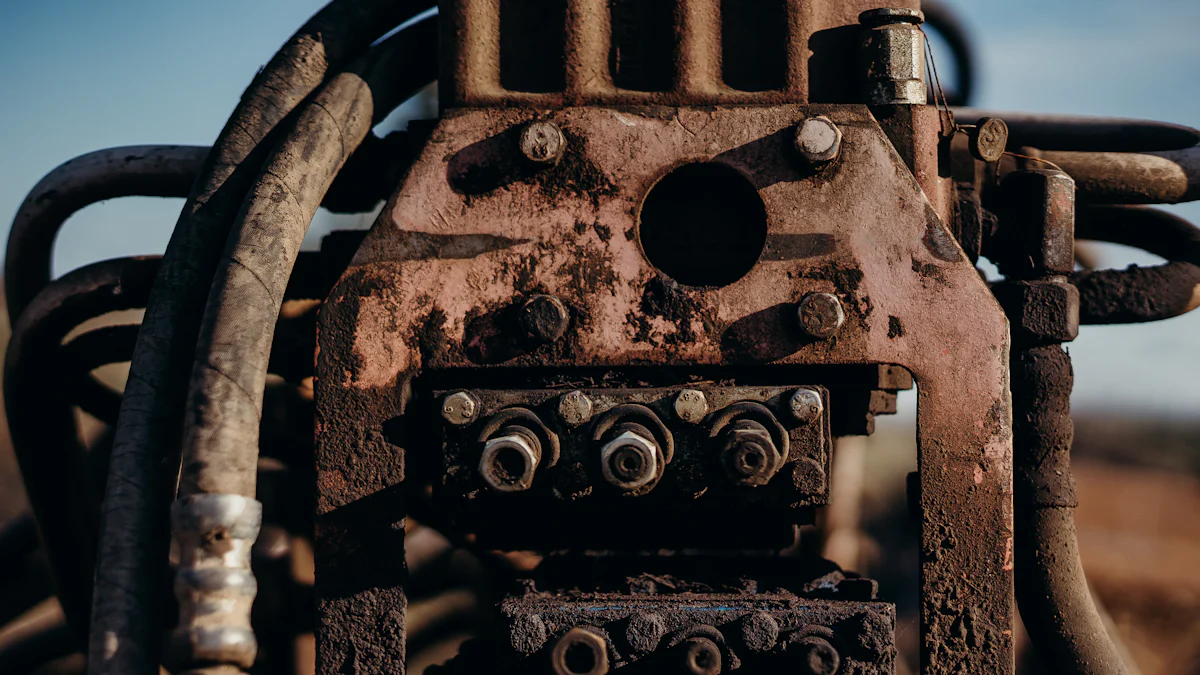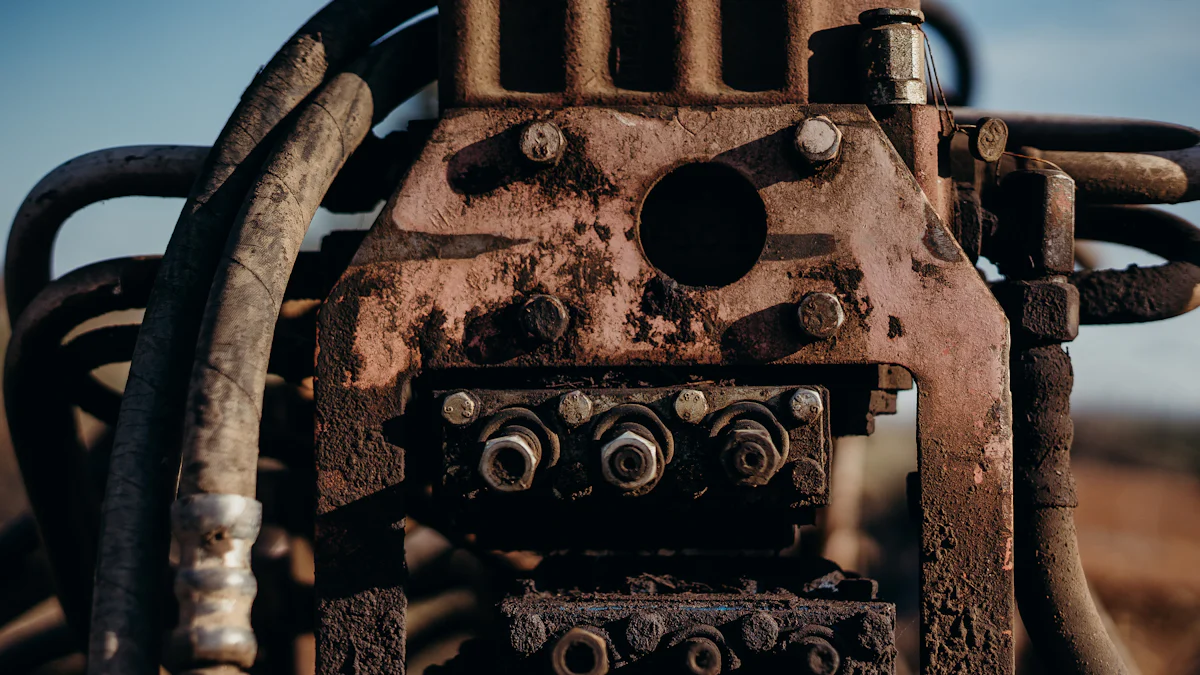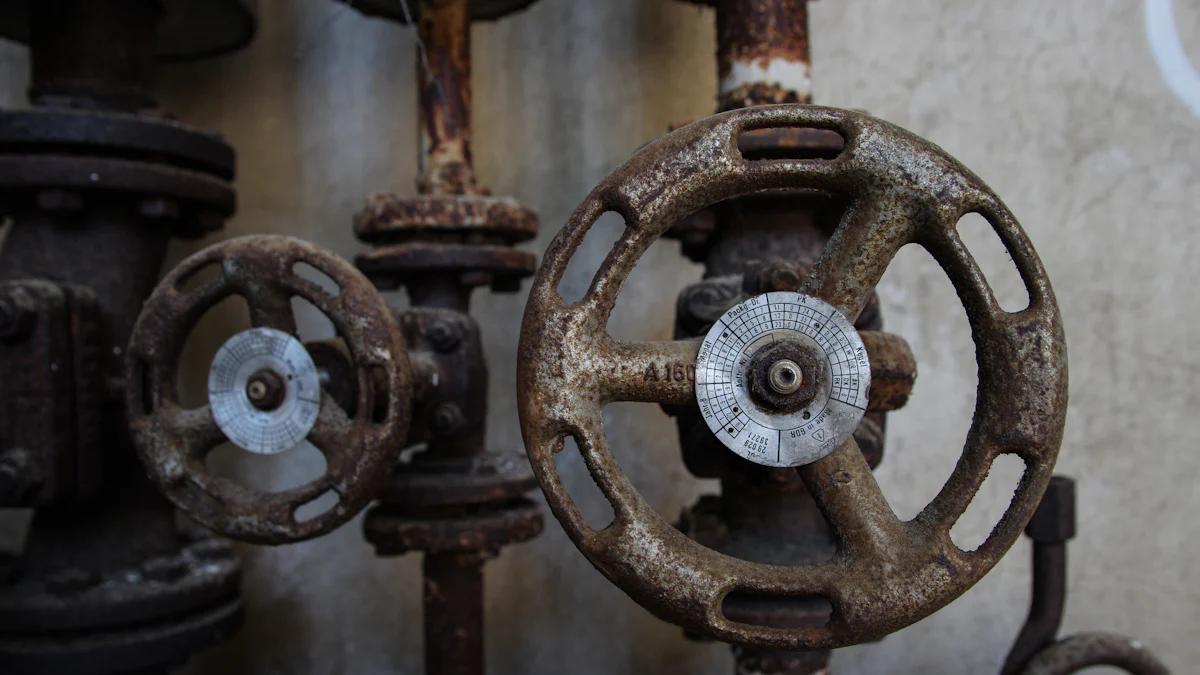
Maintaining an exhaust manifold is crucial for optimal vehicle performance. Rusted exhaust pipes not only strain the engine, leading to decreased fuel efficiency and longer acceleration times but also pose serious safety risks. The Occupational Safety and Health Administration highlights the dangers of carbon monoxide exposure due to malfunctioning catalytic converters caused by rust. To address these issues, understanding the effects of exhaust manifold rust is essential. In this guide, we will explore the causes, identification techniques, removal methods, and prevention strategies to help you safeguard your vehicle’s exhaust system.
Understanding Exhaust Manifold Rust
When considering the causes of exhaust manifold rust, it’s crucial to delve into the intricate processes that lead to this detrimental issue. Moisture and iron reaction stand as primary culprits in initiating the rusting cascade within exhaust systems. The interaction between moisture, particularly from shorter trips or exposure to snow, ice, and salt, and the iron components of the manifold sets off a chain reaction that can compromise the structural integrity of your vehicle. This process is not merely cosmetic; it can become a structural concern if left unaddressed.
Furthermore, corrosive substances like oil, fuel, and coolant in the engine play a significant role in accelerating the rust formation within exhaust manifolds. These substances weaken the metal structure, making it more susceptible to corrosion and eventual cracking. As a car owner, understanding these underlying factors can empower you to take proactive measures to combat rust formation effectively.
Moving on to explore the repercussions of rust on performance reveals a sobering reality for vehicle owners. The insidious nature of rust manifests in various ways that directly impact your driving experience. Reduced fuel efficiency is one such consequence that emerges when rust infiltrates critical components of your exhaust system. The compromised integrity leads to inefficiencies in fuel combustion, ultimately translating into increased fuel consumption—a financial burden no driver wishes to bear.
Moreover, power reduction and acceleration issues are common manifestations of exhaust manifold rust’s detrimental effects on performance. As rust disrupts the seamless flow of exhaust gases through the system, your engine’s ability to generate power efficiently diminishes. This translates into sluggish acceleration times and an overall decrease in driving performance—a frustrating ordeal for any car enthusiast.
In light of these findings regarding exhaust manifold rust’s causes and effects on performance, it becomes evident why timely maintenance is paramount for every vehicle owner. Regular inspections and preventive measures can significantly mitigate the risks associated with rust formation within your exhaust system. By staying vigilant and addressing any signs of corrosion promptly, you safeguard not only your vehicle’s longevity but also ensure a safe driving environment for yourself and others on the road.
Identifying Rust in Exhaust Manifolds

Visual Inspection Techniques
When examining your exhaust manifold for signs of rust, visual inspection techniques play a crucial role in identifying potential issues early on. Start by visually scanning the exterior of the manifold, paying close attention to any discoloration or irregularities on the surface. Look for discoloration that may indicate the presence of rust, particularly in areas where moisture tends to accumulate, such as near joints and connections.
Inspecting the gas-only chamber connecting to the manifold is essential to detect any signs of rust infiltration. Rust in this chamber can signify water exposure, which poses a significant threat to the integrity of your exhaust system. Any indications of rust in this area should prompt immediate action to prevent further corrosion and potential leaks.
Common Areas Prone to Rust
Understanding the common areas within your exhaust system that are prone to rust can help you target preventive measures effectively. The exhaust manifold itself is a primary site for rust formation due to its direct exposure to exhaust gases and external elements. Regular inspections of this component are essential to catch any early signs of corrosion and prevent extensive damage.
Another critical area susceptible to rust is the catalytic converter, which plays a vital role in reducing harmful emissions from your vehicle. Rust near the catalytic converter can compromise its functionality and lead to leaks in the exhaust system. Monitoring this component for any signs of deterioration is crucial for maintaining optimal performance and ensuring compliance with emission standards.
Exhaust Manifold Rust
The presence of rust in the exhaust manifold can have far-reaching implications for your vehicle’s overall health and performance. Beyond compromising the structural integrity of the manifold itself, rust can lead to leaks in the exhaust system, allowing unfiltered emissions into the vehicle’s cabin. This poses serious health risks due to exposure to harmful gases like carbon monoxide.
Moreover, rust-induced damage can extend beyond the exhaust manifold, affecting other components such as the muffler and pipes. Corrosion in these areas not only compromises their functionality but also increases the likelihood of gases entering the vehicle’s interior—a hazardous situation that requires immediate attention.
By staying vigilant and conducting regular visual inspections of your exhaust manifold and related components, you can proactively address any signs of rust formation before they escalate into more severe issues. Prioritizing preventive maintenance and timely repairs will not only prolong your vehicle’s lifespan but also ensure a safe and efficient driving experience for you and your passengers.
Removing Rust from Exhaust Manifolds

Tools and Materials Needed
- Rust Removers and Cleaners: Utilize high-quality rust removers and cleaners to effectively eliminate rust from your exhaust manifold. Look for products like High Temperature Rust Converter, which are specifically designed to treat rust in high-temperature environments.
- Protective Gear: Ensure your safety by wearing appropriate protective gear during the rust removal process. Consider using gloves, goggles, and a mask to shield yourself from harmful chemicals and particles.
Step-by-Step Rust Removal Process
- Cleaning the Surface: Begin by thoroughly cleaning the surface of the exhaust manifold to remove any dirt or debris that may interfere with the rust removal process. Use a wire brush or sandpaper to scrub away loose rust particles.
- Applying Rust Remover: Apply a generous amount of rust remover onto the affected areas of the exhaust manifold. Allow the remover to sit for the recommended duration as per the product instructions to ensure effective penetration and dissolution of rust.
- Finishing and Protecting the Surface: Once the rust remover has done its job, rinse off the exhaust manifold with water and dry it thoroughly. To prevent future rust formation, consider applying a coat of High Temperature Automotive Paint specially formulated for exhaust systems.
Remove Rusted Exhaust Bolts
- Techniques for Safe Removal: When dealing with rusted bolts on your exhaust manifold, exercise caution to avoid causing further damage. Use penetrating lubricants like B’laster’s Corrosion Stop to loosen stubborn bolts before attempting removal.
- Bolt Extraction Tools: Invest in quality bolt extraction tools such as extractor sockets or bolt extractors to safely remove corroded bolts without damaging surrounding components.
By following these step-by-step guidelines and utilizing the necessary tools and materials, you can effectively tackle rust issues in your exhaust manifold while ensuring your safety throughout the removal process.
Preventing Future Rust
Regular Maintenance Tips
Routine Inspections
Regular inspections of the exhaust system are essential to detect early signs of rust formation. By visually examining the exhaust manifold, pipes, and catalytic converter, car owners can identify any discoloration or irregularities that may indicate the onset of rust. Additionally, conducting routine inspections allows for prompt maintenance interventions to prevent further deterioration of the exhaust components.
Protective Coatings
Applying protective coatings to vulnerable areas of the exhaust system can significantly reduce the risk of rust formation. High-temperature ceramic coatings or heat-resistant paints provide a protective barrier against moisture and corrosive substances, prolonging the lifespan of the exhaust manifold and other components. By investing in quality coatings and ensuring proper application, car owners can effectively safeguard their vehicles from the damaging effects of rust.
Environmental Considerations
Avoiding Moisture Build-Up
Moisture build-up in the exhaust system poses a significant threat to its integrity, leading to accelerated rust formation. To mitigate this risk, car owners should avoid driving short distances frequently, as this can prevent the exhaust system from reaching optimal operating temperatures and expelling moisture effectively. Additionally, storing vehicles in dry environments or garages can help minimize exposure to external elements that contribute to moisture build-up.
Proper Storage Conditions
Proper storage conditions play a crucial role in preventing future rust in the exhaust system. When parking your car for extended periods, ensure it is stored in a well-ventilated area free from humidity or extreme temperature fluctuations. Using car covers made of breathable materials can also protect the vehicle from environmental factors that promote rust development. By prioritizing proper storage practices, car owners can maintain their exhaust systems’ longevity and performance.
In conclusion, addressing exhaust manifold rust is not merely a cosmetic concern but a critical structural issue that can jeopardize your vehicle’s performance and safety. By understanding the causes and effects of rust on exhaust systems, car owners can take proactive steps to prevent corrosion and maintain optimal functionality. Regular inspections, timely maintenance, and protective coatings are key strategies to combat rust formation and ensure long-term durability. For high-quality automotive components like Harmonic Balancers, contact Werkwell today to enhance your vehicle’s performance and longevity.
Post time: Jun-07-2024



